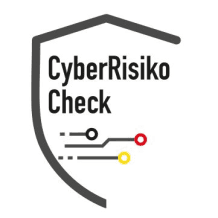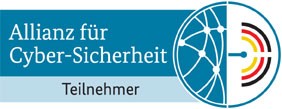SSL/TLS is a fundamental technology that plays a central role in today's digital world in protecting data integrity and security. The protocols SSL (Secure Sockets Layer) and its modern successor TLS (Transport Layer Security) are essential for encrypting communication between web servers and browsers. These technologies ensure that sensitive information such as credit card data, login credentials, and other confidential information are protected against unauthorized access attempts.
What exactly does SSL/TLS mean? These encryption protocols were developed to secure data exchange in networks. They ensure that information cannot be intercepted or tampered with during transmission. Using cryptographic methods, the data traffic is encrypted, so third parties cannot gain knowledge of the transmitted content.
How does SSL/TLS work? The core of the technology is a complex handshake process that occurs in several steps. In the first phase, the client (for example, your browser) establishes a connection to the server and requests its digital certificate. This certificate contains publicly accessible keys that are used for encrypting communication. In the next phase, the client verifies the authenticity of the certificate using certification authorities (CAs), which are trustworthy. After successful verification, a shared secret (Session Key) is negotiated, which is used for the symmetric encryption of the transmitted data. This entire process ensures that communication is encrypted and authentic.
Why is SSL/TLS so important in digital communication? In a world where cyberattacks and data leaks are commonplace, it is essential that companies and individuals effectively protect their data. SSL/TLS provides not only confidentiality but also integrity and authenticity of the data. Confidentiality means that only authorized parties have access to the information. Integrity guarantees that data cannot be altered unnoticed during transmission. Authenticity ensures that communication indeed takes place between the intended parties and is not forged by an attacker.
Where is SSL/TLS used? SSL/TLS is applied in numerous areas, ranging from e-commerce and online banking to email communications and other web-based services. Almost every website that processes sensitive data today uses an SSL/TLS certificate to secure the connection between the server and the end user. Furthermore, it is a critical component of modern security architectures in companies and is also used in internal communication systems to ensure data integrity.
How does SSL/TLS contribute to user-friendliness and trust in digital services? Many internet users recognize visual cues, such as a padlock symbol in the browser’s address bar, indicating that their connection is secure. These symbols appear when SSL/TLS is correctly implemented. Such trust is particularly important for e-commerce websites, as customers are only willing to disclose their payment information if they can be sure that their data is protected. Consequently, the conversion rate increases and overall trust in digital services improves.
What are the key benefits of SSL/TLS? The primary advantages include:
Data security: SSL/TLS prevents third parties from reading or manipulating the transmitted data.
Building trust: By using SSL/TLS, users feel secure, which increases the acceptance and use of online services.
Authentication: The protocol ensures that communication occurs from and to authentic sources, reducing phishing attacks.
Legal and regulatory compliance: Many industries are subject to strict data protection regulations that mandate the use of encryption technologies. Implementing SSL/TLS can help meet these requirements.
What are the challenges and current developments in SSL/TLS? Although SSL/TLS is considered one of the most secure methods for data encryption, it is not free of vulnerabilities. Over time, various attacks have been identified, such as the POODLE attack scenario (Padding Oracle On Downgraded Legacy Encryption) and the BEAST (Browser Exploit Against SSL/TLS) attack. These threats have led to older versions of SSL/TLS, such as SSL 2.0 and SSL 3.0, no longer being used. Instead, experts recommend using the latest versions of TLS, which are under constant observation and regular updates to counter changing threats. Ongoing research and development in the field of cryptography have also led to the introduction of even more secure methods that further protect data integrity.
Another topic that often arises in discussions about SSL/TLS is certificates. What are digital certificates and what role do they play in this context? Digital certificates are issued by trusted certification authorities (CAs) and serve to verify the identity of servers. They are based on a public key that ensures the handshake process between the client and server is secure. An expired or invalid certificate can cause a connection to be marked as insecure and users to be warned. Therefore, it is crucial that these certificates are renewed regularly and kept up to date.
What role does SSL/TLS play in modern IT infrastructure? Consistent implementation of TLS, combined with other security measures, forms the foundation for a robust security approach in IT. Besides encryption, TLS also provides authentication so that communication partners can be uniquely identified. This prevents the establishment of so-called man-in-the-middle attacks (MITM), where attackers try to position themselves unnoticed between the communication of two parties. By combining TLS with other security protocols, such as VPNs (Virtual Private Networks), companies can further secure their internal networks.
What is the future of SSL/TLS and what innovations can we expect? The development of encryption technologies is never stagnant. With the advancement of quantum computer technology, the discussion around quantum resistance is gaining significance. Researchers are already working on post-quantum cryptography to future-proof SSL/TLS protocols. These new approaches aim to ensure data security even in an age when quantum computers can crack conventional cryptographic methods. Furthermore, better integration of SSL/TLS into complex systems is being worked on to minimize administrative effort and enhance user-friendliness.
Another relevant aspect is the trend toward automated certificate management solutions. What is automated certificate management and why is it important? The process of renewing and managing certificates can be extremely labor-intensive and error-prone for large organizations. Automated systems help simplify this process by monitoring the entire lifecycle of the certificates. This significantly reduces the risk of an expired certificate leading to outages or security gaps. Such management solutions allow IT departments to focus on other aspects of IT security while ensuring the integrity of SSL/TLS connections.
How does SSL/TLS influence global internet security? The widespread adoption of SSL/TLS has a significant impact on overall internet security. By encrypting data traffic, not only is protection against unauthorized access improved, but the risk of cybercrime is also significantly reduced. Given the increasing digitization of all areas of life, the importance of encryption technologies will continue to grow. Even self-regulating institutions and international bodies are working to establish standards and best practices that promote the use of SSL/TLS and advance its implementation in various industries.
What advantages do companies gain by implementing SSL/TLS? Companies benefit in multiple ways from the use of this encryption technology. On one hand, they strengthen the trust of their customers, as a secure connection is perceived as a sign of professionalism and care. On the other hand, they also meet legal and regulatory requirements that mandate the protection of sensitive data in many industries. Moreover, TLS has the advantage of being relatively easy to integrate into existing systems, thereby minimizing additional costs and complexities. Companies that implement SSL/TLS ensure that their data, as well as that of their customers, are protected against the growing threat of cyberattacks.
In conclusion, it can be stated that SSL/TLS is not only a technical standard, but also an essential tool in the modern security arsenal. It enables the establishment of secure communication channels, protects digital identities, and tra




